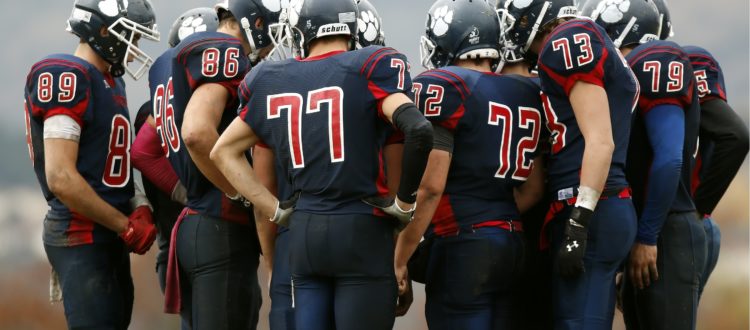Authored by Andrew Long, LitheSpeed, also a blogagility.com contributing author.
When teaching teams about Scrum and its design, there’s no better source than Jeff Sutherland himself. Here, in particular, is one video that I’ve used dozens of times:
So [the daily standup] is like a huddle in a football game, except a little bit longer than a huddle.
I admit for a long time I didn’t fully appreciate this standup-huddle analogy. The daily Scrum already rests on a rugby metaphor, and now we’re comparing to American football? Not to mention, a 15-minute standup is more than “a little bit longer” than a 10-second huddle! But that day — eureka, light bulb!
You see, in a huddle, the offense comes together, receives the play, and a few seconds later, the players break to their individual positions. The huddle aligns and focuses the offense, with each player knowing exactly what is the goal and what to do. This is in fact a much richer interaction that it appears on the surface.
Imagine a fairly typical 2nd-and-long situation in which the team needs to pick up a few yards and make it a manageable 3rd-and-short. The coaches signal in the play to the quarterback, and the QB pulls in the huddle. The specific play has been practiced dozens of times, but for it to work as designed, well, to each player Bill Belichick might say, “Do your job!”
So let’s imagine, for this particular scenario, here’s what must happen:
- The offensive line must work together to ensure no penetration from defensive linemen, as well as pick up any blitzes;
- The tight end must seal the edge, then look to get upfield and take out the strong safety;
- The two wide receivers on the strong side are to engage and sustain blocks on their assigned defenders;
- The weakside WR has to read the defensive alignment and run an option route designed to pull the deep safety and outside linebacker towards his side of the field;
- Before the snap, the QB must read the defense, and if the defense is aligned in a way that breaks the offense’s play design, switch the play; and
- The running back lines up behind the QB, mentally preparing to cut left and look for a gap between the tackle and guard or else bounce his run outside.
At the professional level, pretty much everything above must happen as designed or the play will likely fail. And yes, the offense has had multiple repetitions in practice, but in just a few seconds in the huddle, the team must receive the play, recognize the tactical goal, recall the play design and each player’s task, and leave the huddle refocused from the last play and aligned and ready to execute.
Now consider the similarity with the daily standup: In a timebox of 10-15 minutes, the team members quickly review what has been accomplished, refocus on the sprint goals, shift to what the next effort requires, ascertain any variables or impediments in play, then break to their tasks. Like the football huddle, the intent of this ceremony is for the team to head back to their task strategically and situationally aware, tactically aligned, individually focused, and ready to execute.
Quite often we think of the standup as answering three questions — “What have you accomplished since yesterday, what are you doing today, and what blockers are in your way” — but the point is not to accurately ask and answer these three questions, the point is for those questions to generate dialog that achieves our true goal: full team alignment and readiness.
You might also have noticed that many football teams use a “no-huddle” offense. Yet the thinking and preparation is the same: Based on down, distance, score, and time left, understand what the goal of the play is, align quickly, and execute flawlessly. Similarly with Agile teams: it’s not strictly about asking and answering the three questions, it’s about generating daily alignment and readiness. So, let’s adjust the process as necessary to get there.


